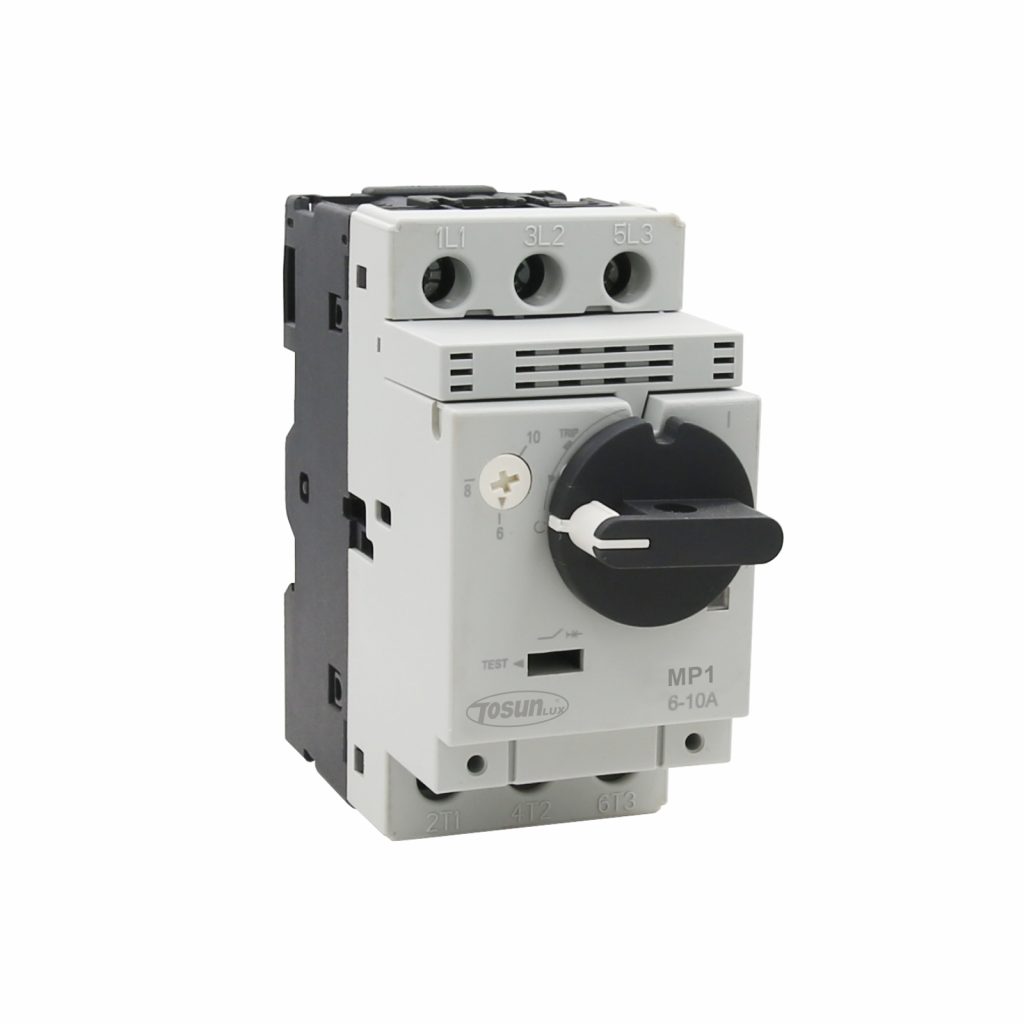Can I Use an AC Circuit Breaker in a DC Circuit?
Table of Contents
ToggleWhether designing control panels for heavy machinery or renewable energy microgrids, many industrial electricians have faced this question at some point in their career. Using the wrong protective device type certainly won’t end well, but just what makes AC and DC circuit breakers different? Let’s dive into the technical details behind this issue that comes up often in commercial and industrial applications.
The Basics of AC vs DC
As a refresher, alternating current (AC) periodically changes polarity and magnitude in a sinusoidal waveform over time, while direct current (DC) flows continuously in one direction. This foundational distinction affects how circuit breakers and fuses operate to interrupt faulty circuits.
AC circuit breakers rely on electromagnetism – as current fluctuates through zero crossings in its sine wave, the magnetic field collapses and the breaker contacts open. However, DC does not oscillate through zero, so simply monitoring current magnitude is not enough for circuit protection. Other technical considerations come into play requiring specialized DC current breakers.
Using AC Circuit Breaker in DC Circuit
Here are a few considerations to keep in mind while using AC vs DC circuit:
Trip Mechanisms
A key difference lies in the internal trip mechanism used to break the circuit. In AC breakers, this is typically a thermal-magnetic type that senses heat and magnetic forces from AC flow. In contrast, DC current breakers often use melting alloys or bimetal strips to translate current into heat that physically expands a mechanism.
The lack of a current zero crossing means DC breakers don’t have the electromagnetic assist to reliably extinguish the arc as contacts separate. A clearing mechanism is necessary that operates independently of current flow direction. Simply put, an AC breaker’s trips rely on properties unique to alternating current that do not translate to direct current applications.
Contact Arcing
Another issue comes from arcing as circuit contacts open. AC arcs die out naturally twice per cycle as polarity flips. But DC arcs continue constructively until breaking is forced, which can re-strike the arc if not rapidly quenched. This phenomenon underscores the need for integrated arc chutes, venting, or specialized contacts in DC breakers to safely extinguish high energy discharges.
Ratings and Sizing
Differences also impact component sizing and trip settings. Unlike sinusoidally fluctuating AC, DC current remains constant in magnitude once established. So DC breakers must be appropriately current-rated based on actual load conditions rather than factored for AC’s peak/RMS variations. Underrating can lead to early failure or lack of protection.
Voltage also affects breaker design and ratings. While mains AC voltage is standardized, DC levels vary widely depending on the application. Industrial systems may utilize higher voltages that necessitate reinforced insulation and arc-quenching in DC breaker frames and contacts. Proper voltage class selection is crucial.
Approval Considerations
It’s also worth noting that regulatory bodies like UL offer different product safety standards for AC vs DC power circuit breakers given their dissimilar operating principles and failure modes. Swapping breaker types invalidates any safety certifications or listings, raising compliance issues depending on the end-use environment and customer demands.
Conclusion
In light of the technical factors reviewed here, using an AC breaker on DC power is not recommended practice. Without accounting for these distinctions, the circuit breaker may not provide reliable overload or short circuit protection due to incompatible tripping mechanisms, arcing performance, and component ratings. Premature failure, lack of arc control, inaccurate interruption, or safety hazards could potentially result.
By gaining a deeper technical appreciation for these systemic differences, engineers and tradespeople can feel confident specifying the right protective devices for any commercial or industrial installation handling AC or DC power.
Contact with TOSUNLux today to get the industrial-grade circuit breakers for any application.
Tel: +86-577-88671000
E-mail: ceo@tosun.com
Skype: tosunelectric
Wechat: +86-139 6881 9286
WhatsApp: +86-139 0587 7291
Address: Room No.1001 Wenzhou Fortune Center,Station Road, Wenzhou, China
REQUEST A QUOTE
WhatsApp us
 : +86-139 0587 7291
: +86-139 0587 7291 English
English Español
Español Русский
Русский Français
Français العربية
العربية Português do Brasil
Português do Brasil Українська
Українська Türkçe
Türkçe Polski
Polski Nederlands
Nederlands Italiano
Italiano Bahasa Indonesia
Bahasa Indonesia हिन्दी
हिन्दी اردو
اردو አማርኛ
አማርኛ Հայերեն
Հայերեն ไทย
ไทย Монгол
Монгол فارسی
فارسی Shqip
Shqip Ελληνικά
Ελληνικά



